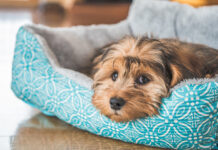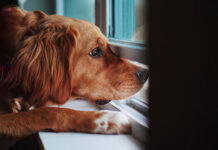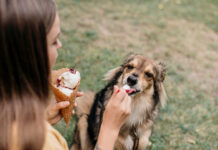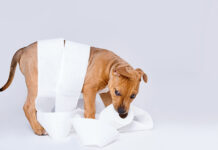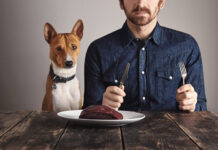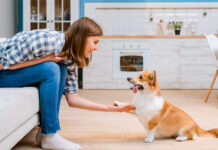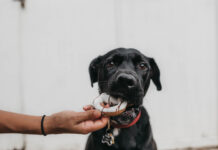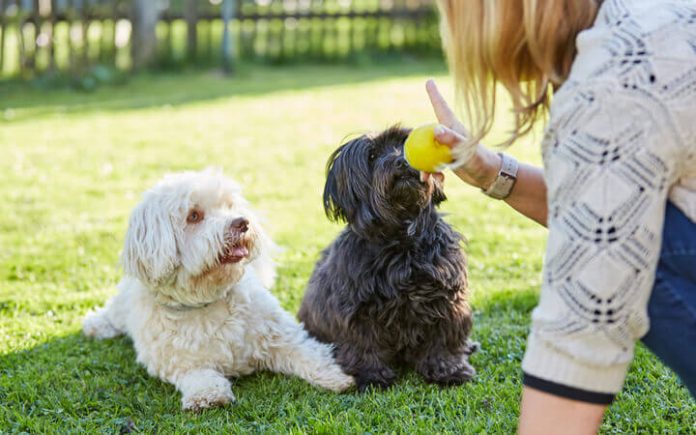Last Updated on January 7, 2021
So, you’ve become a dog parent for the first time ever? Are you ready to take on the responsibility of training your dog?
Whether you already know this or not, training is a very important part of a dog’s life and well-being, for many reasons. Not only will it help your dog become more disciplined or tame any problem behavior, but it will also stimulate them mentally and physically, and increase their sociability among other pets, people, etc.
Dog training, of course, includes house training — also known as “potty training” — in which you teach your puppy or dog to urinate or defecate in a special place at home. This kind of training may seem challenging at first but if you follow the right tips, it will go just fine.
And if you’re tight on budget and can’t afford a professional trainer but still need to train your dog, you may as well try potty training your dog by yourself, without spending a penny. All you’ve got to do is read the following list of 5 simple ways to home train your pooch.
Jump right into it now!
5. Set a schedule
First things first, do you know if your puppy is ready to get house-trained?
Experts recommend that you start potty training your puppy when they are aged between 12 and 16 weeks, as younger puppies do not have enough control over their bladders so they cannot hold it, even if you make an attempt at training them from a very young age.
Now back to the first step to housetrain your dog. One of the first things that you need so as to begin potty training a dog is a litter box.
Just like with crate training, you should establish a regular schedule in regard to feeding and housetraining.
You should monitor the amount of food and water your dog gets during the day, as well as when and how many times they need to urinate or poop. Then, set the schedule based on that information and put your puppy on the litter tray or in the litter box. Your dog will soon grow accustomed to a routine and no longer do the business wherever and whenever. Have faith in your pup as well!
You’re also ought to keep an eye on your dog’s behavior and assess their stool to detect any health problems like constipation or diarrhea which also affects their house training.
4. Confine the potty spot
Place the litter box in one spot and take your dog to that same spot whenever it’s time for your dog to do the business. Avoid taking your dog to different spots in your house or yard or changing the placement of the litter box as it will only confuse your dog and they will end up littering all over the place instead!
Also, do not just leave your puppy or dog unattended, stick with them as they use the litter box or go outside to do the business. This is an important part in house training and necessary to prevent any accidents until they are fully trained.
Experts always recommend taking your puppy for potty early every morning and from 3 to 5 times a day. When your dog wakes up from a nap, they will most likely need to relieve themselves again, so make sure to take them to the same spot which they will soon start recognizing, by scent, as their puppy toilet!
3. Use the treats card
Encouraging your dog will definitely help you train them faster and make them love using their litter box instead of the floor or couch to urinate or poop!
Stay nearby until your puppy finishes the business then pet and praise them for a good job with a treat, aka dog food and dog toys. Or, you can take your dog for a fun walk around the neighborhood soon after they successfully use the litter box, and play fetch or other games with them.
There is nothing wrong with a little bribe as a reward for your pup’s own hard work. Just make sure to take them for potty after that!
2. Use pee pads
If your puppy is quite the stubborn type, you can still use pee pads or potty pads and keep them from doing the business on the floor until they learn to use a litter box.
Get a dog training pad that absorbs most moisture and comes with a treat dispenser. Such pads are available now and they come with a treat dispenser, to which they send wireless signals and information about your dog’s business and the dispenser provides the dog with treats!
These pads will do an amazing job helping train your dog when you’re away.
1. Try the umbilical cord method
When it comes to the best method to try in times of desperation, the umbilical cord training method is the one!
What can you do, some puppies are just more stubborn than others and require more of your attention and efforts. So, the umbilical cord works by tying your puppy to your hip (literally) through a cord when you are busy so that you can still supervise their behavior when they’re just roaming the house or playing around, and prevent any accidents.
When you have other things to do, you can still watch over your dog as the tug on your belt loop will alert you of its “adventurous” activities! This way, you will also be able to know when they are using their crate or box.
Beware that some dogs may find it difficult to eliminate due to some health problems, so don’t second-think taking them to the vet. Be patient and know that not all dogs can train fast and the same way, so be creative while training your own special pooch!


